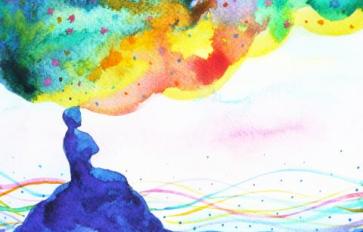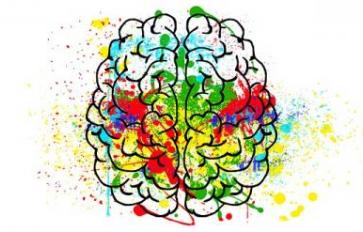
Meditation is a great teacher, but our internal chatter and distractions oftentimes hinder efforts to deepen awareness and mindfulness, let alone gain many insights. With practice, there are ways to overcome mind-created obstacles.
It requires patience and practice to access meditative mindfulness before upping the ante for insights. Letting go of obstacles is essential, and paradoxically difficult – especially for beginner meditators. We need to become aware of what’s hindering us from becoming more aware or mindful.
For beginners, learning a mindfulness practice might seem like learning how to ride a bicycle – while you’re still building a bicycle from a pile of bicycle parts. Yeah. There’s all kinds of stuff scattered within the mind.
Emotions, feelings and thoughts ebb and flow through our mind. The present moment easily gets lost as the mind shifts focus back and forth between the past and future, too busy and preoccupied with something else to pay close attention to what’s happening in the present moment.
It’s ironic that meditation is challenging because the mind is simply not accustomed to or comfortable with doing nothing. The mind keeps busy. It might be feeling angry, planning something, ruminating, feeling happy or doing any number of things.
Emotions, feelings and thoughts constantly generate obstacles to observing pure awareness. The mind generally gets lost in itself, following whatever storyline it creates. Lack of mindfulness is like a daydream or driving asleep at the steering wheel.
To practice mindfulness is to watch what manifests in the mind without getting drawn into any storyline; simply remaining aware of what arises. It’s like watching a movie while staying aware at all times that you’re watching a movie, without ever becoming lost in following the story—never forgetting it’s a movie.
Experienced meditators know not to become discouraged or self-judgmental when the mind wanders like minds do.
Try It:
One of the most basic techniques for beginners involves focusing on the breath and counting to 20 and then backwards to zero. The instruction calls for starting over each time the meditator becomes lost in a thought and forgets to count.
A friend once joked that his mediation experience was simply endlessly counting one, one, one, one, etc. His distracting thoughts are not unusual.
Deeper meditation experiences are possible for individuals when the mind slows down, relaxes and develops some mindfulness. Knowing where and how to look and watch what’s happening in the mind leads to even deeper meditation experiences.
Some more advanced techniques shift the focus from the breath to watching how thoughts and feelings arise and dissolve, noting patterns and how thoughts and feelings and emotions affect one another and trigger changes in the train of thought. With some concentration, it is possible to focus on looking at the space between thoughts and gain insights. These are but a few examples.








